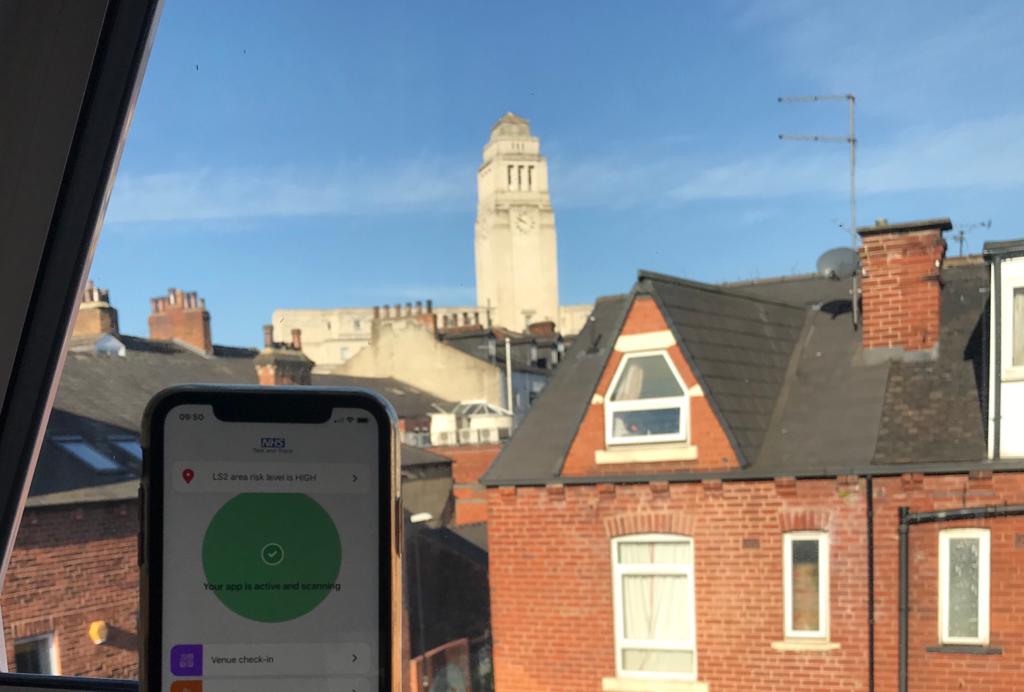The long-awaited NHS track and trace app was finally released in England this week. With the aim of finding members of the public at risk from COVID-19 who have slipped by contact-tracers, the app has been downloaded over 10 million times. Health Secretary Matt Hancock has said that the more people who download it, the more effective it will be; however with doubts rising surrounding the performance of the app and data protection issues, it is uncertain how popular the app will be.
What does the app do?
The app uses Bluetooth to track the users movements, to alert them if they have been in contact with someone who later tests positive for COVID-19. It relies on both parties having the app, and inputting their test results. It will then tell the alerted person to self-isolate for 14 days, and to get a COVID-19 test.
The app can also be used to check into hospitality venues such as pubs or restaurants, using a QR code unique for each venue. If this venue is found to have an outbreak during the time a user visited, they will receive a self-isolate and test notification.
It also allows the user to input their symptoms if they are feeling unwell, and will recommend isolating for 8 days and getting a test if the symptoms match COVID-19.
However, the app has only been online for a matter of days, and is already facing controversy and accusations of failure. The huge delay in the release of the app, paired with the lack of tests available, means that the system has missed many who needed to isolate.
In addition, the official NHS COVID-19 app twitter account admitted that tests taken by Public Health England or NHS hospitals could not yet be inputted into the app. That is more that 70,000 tests a day which are not being registered by the app, whether they are negative or positive. Therefore, those who have been told to isolate by the app cannot prove they have a negative result, and those who have a positive result cannot use the app to alert members of the public they may have infected.
The shadow Health Secretary, Jonathon Ashworth, tweeted “We all want to see this app succeed. We’ve encouraged people to download it. But have they really launched an app that doesn’t actually link to tests carried out by NHS hospital labs & PHE labs instead only including tests carried out via the outsourced lighthouse lab network??”. In response, the Department of Health have said they are ‘urgently working’ to rectify this.
The government aims to get as many college and university students to download the app as possible, as worries grow about COVID-19 and the student population. A poll on The Gryphon’s twitter account revealed a 50/50 split on whether Leeds students will download the app.
I spoke to several students to understand their problems with the app.
Some cited concerns of their data from the app being sold to outside companies, especially as the track and trace system is being run by private firms. Data privacy is a popular concern, as the app tracks the user’s every move, and the people they come into contact with.
The Heath Secretary has said that the data would be “handled according to the highest ethical and security standards”; however Professor Ross Anderson, teaching security engineering at the University of Cambridge, says that the years of NHS data control incompetence makes it hard for him to believe it’s truly safe.
Other students expressed that they were unable to download the app due to lack of phone memory or not having a new enough device. The app is also only available on iPhone 7 or above with IOS 13.5 (only released last may) or Android 6.0. This means millions do not have access to the app entirely, with many others reluctant to update to the latest updates due to lack of phone storage or time.
The reaction to the app from the student population shows there are clear flaws in the system. Despite a positive first weekend of downloads, the app must be fixed to regain public trust, and to have a real impact on the slowing of COVID-19.
Image Credit: Alex Chitty/ The Gryphon

